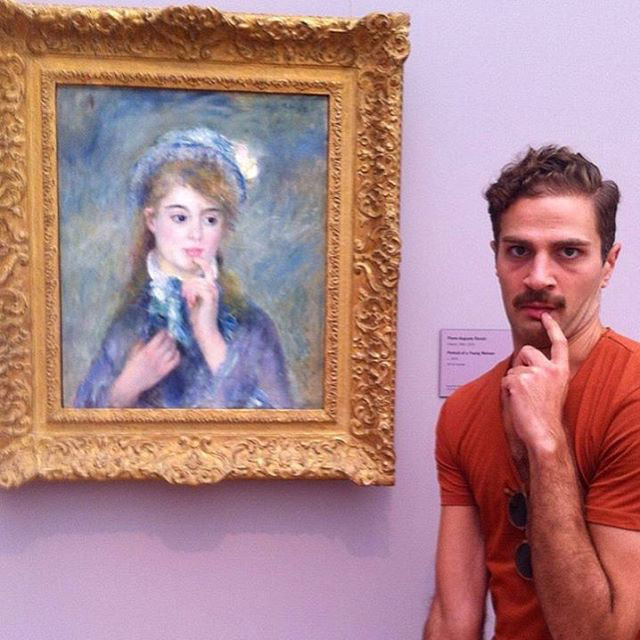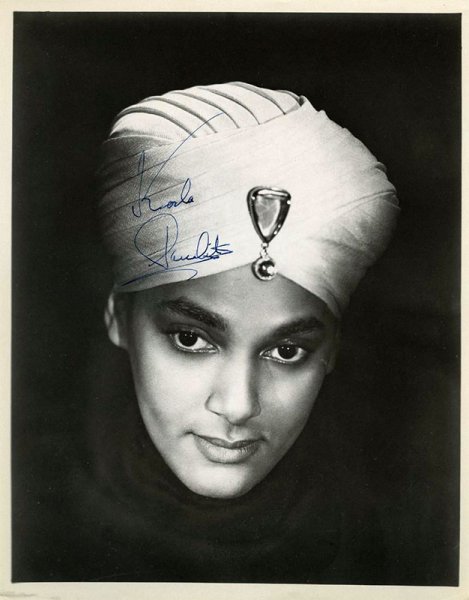18 janvier 2016 / 06 h 12 / Stopping Time
13 novembre 2015 / 06 h 20 / Sans peur
Fauteuil en acrylique “Cactus”. Design Vedat Ulgen. Studio Thislexik.
Photographie Rae Maxwell.
Convient pour les minous aussi.
7 octobre 2015 / 01 h 40 / God Hates Renoir
-
1. Le 8 octobre 2015,
Philip_MarloweEnfin une critique artistique courageuse ! J’ai moi-même de très sérieuses réserves quant aux fresques de Lascaux.
1 octobre 2015 / 12 h 45 / You’re supposed to be asleep
Thank you for leaving my kayak alone.
I’m going to pepper spray you in the face.
That’s what I’m gonna to do to you.
[She sprays pepper spray at the bear.]
Go away!
No! Get away from the kayak.
Get away from that kayak.
Come here!
Come on.
Stop it, bear. Stop it!
Bear! Bear! Bear!
You’re breaking it. You’re breaking my kayak.
Why are you doing that?
Why are you breaking my kayak?
Why are you breaking my kayak!?
What am I gonna to do?
Why are you breaking my kayak!?
Stop it! Bear! Stop that!
Stop that, bear! Bear! Stop!
Stop breaking my kayak please.
Please stop.
Gosh darn-it.
Oh, why are you doing that?
Bear, please stop.
Please stop, bear.
It’s the end of September.
Why are you here?
Why are you here? Ohhh.
Bear. Bear. Stop that.
Stop that. Bear stop that. Bear!
Bear stop that. Bear stop that.
Bear stop that. Please stop that bear.
Bear, please stop that.
Please stop breaking my things.
Please stop breaking my things, bear.
Bear. Please stop breaking my things.
It’s not — it’s not even food.
It doesn’t even taste good. It’s just plastic.
Bear, please stop. Please stop, bear.
Bear, please stop. Please stop that, bear.
Bear, I don’t care, I’m going to bear spray you.
Please stop.
Bear! Bear! Bear! Bear!
Bear, please stop.
30 septembre 2015 / 14 h 59 / He liked the ranch so much
“Today was my first full day at the ranch,” he wrote in the diary. “I fed the cats and horses. So much I can do here I have to remind myself to just relax and take my time.
“I don’t feel alone here, I guess with 2 cats and 3 horses it’s kinda hard to be alone. Last night I had a fire in the house. It was so (peaceful). I slept like a little baby.
“I saw a picture in the basement on the wall of a man holding and weighing fish on a boat. Looking at him I realized we look a lot alike, but I think I’m more handsome :-).”
The Canadian Press, Tim Petruk: “Man breaks into B.C. home, showers, shaves, feeds cats, writes in diary, starts fire, caught watching TV.”
22 septembre 2015 / 21 h 32 / Hommes de demain
Tendances coiffure hommes 2015-2016, au salon Mondial Coiffure Beauté, Paris. Photographie magazine Biblond.
(Merci Guy.)
20 septembre 2015 / 23 h 07 / Guevedoces
In every way, Johnny is physically and biologically male. But, astonishingly he did not grow a penis until he hit puberty. He is one of many children who live in Salinas, an isolated village in the southwestern Dominican Republic, who are seemingly born female, only to become men in their teenage years.
Although Johnny’s story may seem extraordinary, cases of little girls turning into boys are so prevalent in the village that it is no longer considered abnormal. The children are simply referred to as the ‘guevedoces’ – which literally translates as ‘penis at 12’*.
[…] The rare genetic disorder occurs because of a missing enzyme which prevents the production of a specific form of the male sex hormone - dihydro-testosterone - in the womb.
All babies in the womb, whether male or female, have internal glands known as gonads and a small bump between their legs called a tubercle. At around eight weeks, male babies who carry the Y chromosome start to produce dihydro-testosterone in large amounts, which turns the tubercle into a penis. For females, the tubercle becomes a clitoris.
But some male babies are missing the enzyme 5-α-reductase which triggers the hormone surge, so they appear to be born female with no testes and what appears to be a vagina. It is not until puberty, when another huge surge of testosterone is produced, that the male reproductive organs emerge. What should have happened in the womb happens around 12 years later. Their voices deepen and they finally grow a penis.
[…] Many decide not to change from their female names, so some men in Salinas have names like Catherine.
The guevedoces were first discovered by a Cornell University endocrinologist Dr Julianne Imperato in the 1970s who travelled to Dominican Republic after hearing strange rumours about girls turning into boys. Further cases have since been seen in the Sambian villages of Papua New Guinea although the Sambians view the children as flawed males and they are often shunned, unlike the Dominicans who welcome the transformation with widespread celebration.
[…] “Guevedoces are also sometimes called “machihembras” meaning “first a woman, then a man”.
[…] Around one in 90 children in Salinas are guevedoces and although they resemble sexually normal males, subtle differences do still exist in adulthood. Most have decreased amounts of facial hair and smaller prostate glands relative to the average male.
The Telegraph, Sarah Knapton: “The astonishing village where little girls turn into boys aged 12.”
(*) In fact, the meaning is “testicles at 12” (“huevos — testículos — a los doce”).
-
1. Le 21 septembre 2015,
JoachimÇa m’a fait penser à 6 Things Everyone Experiences When They Go Through Second Puberty
15 septembre 2015 / 02 h 12 / The Indian Liberace
Before Liberace, there was Korla Pandit. He was a pianist from New Delhi, India, and dazzled national audiences in the 1950s with his unique keyboard skills and exotic compositions on the Hammond B3 organ. He appeared on Los Angeles local television in 900 episodes of his show, “Korla Pandit’s Adventures in Music”, smartly dressed in a suit and tie or silk brocade Nehru jacket and cloaked in a turban adorned with a single shimmering jewel. The mysterious, spiritual Indian man with a hypnotic gaze and sly grin was transfixing.
Offstage, Korla—known as the “Godfather of Exotica”— was living the American dream: he had a house in the Hollywood hills, a beautiful blonde wife, two kids, and a social circle that included Errol Flynn and Bob Hope. He even had his own floral-decorated organ float in the Rose Bowl parade in 1953.
Like most everything in Hollywood, it was all smoke and mirrors. His charade wasn’t his stage name—it was his race. Korla Pandit, born John Roland Redd, was a light skinned black man from St. Louis, Missouri. It was a secret he kept until the day he died.
[…] As legend has it, Korla was a child prodigy born in New Delhi to a Brahmin priest and a French opera singer. When he was 11, Korla was sent away to England and then to America for classical training at the University of Chicago.
[…] Americans fascinated with the east eagerly accepted this charming figure and his mystical interpretations due to their minimal knowledge of the Indian culture and customs—by and large, Americans were only exposed to swami stereotypes in TV and film. Which is probably why nobody disputed his fantastic story, although he was notably uncomfortable when Indian fans asked to meet him after his gigs. “He wasn’t the first person to pass as a white man in order to get ahead, he just passed as an Indian man wearing a turban,” a childhood friend remarks in the film. (Christiansen: “In hindsight, he said he was Hindu but Hindus don’t wear turbans. Sikhs do, but they don’t wear jewels on their turban.”)
It wasn’t the first time Redd had passed as something other than black—Korla Pandit was just one of his incarnations. After arriving in Los Angeles, he began playing jazz and R&B but quickly realized he could make more money playing Latin tunes as “Juan Rolando”. Passing as Mexican, he was able to join the whites-only Musicians Union. […]
The New Republic, Liesl Bradner: “How a Black Man From Missouri Transformed Into the Indian Liberace”.





1. Le 13 novembre 2015,
Gilles
J’adore… le concept du fauteuil !